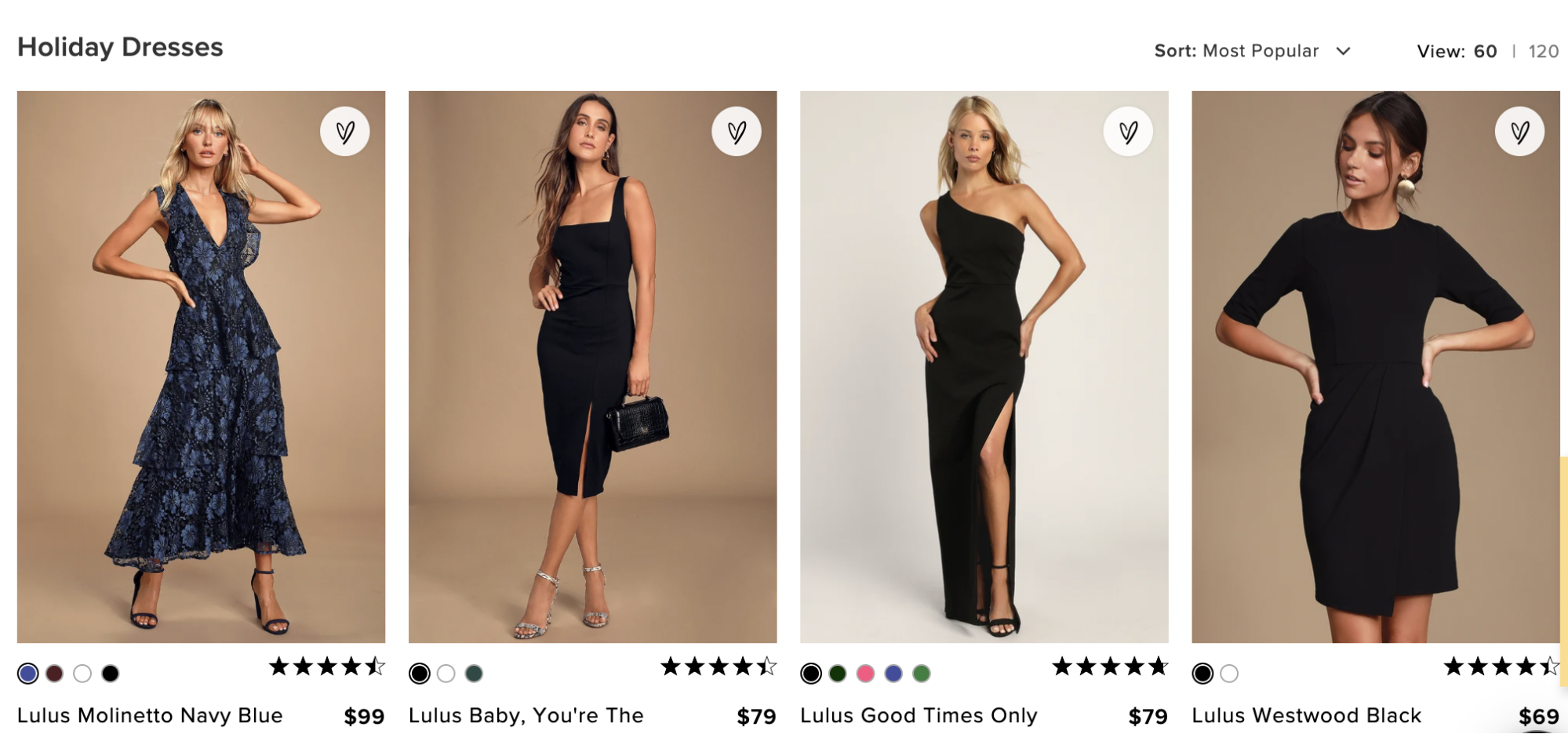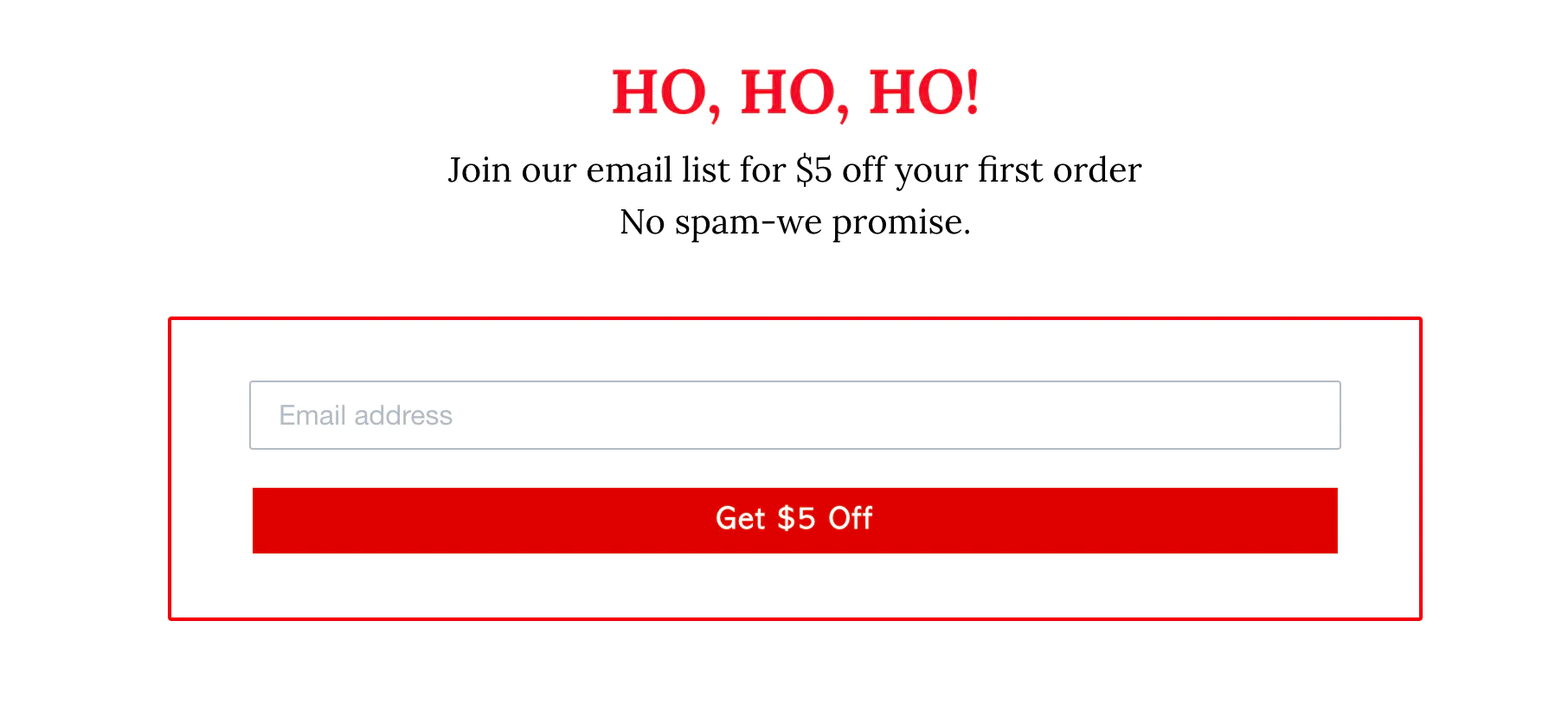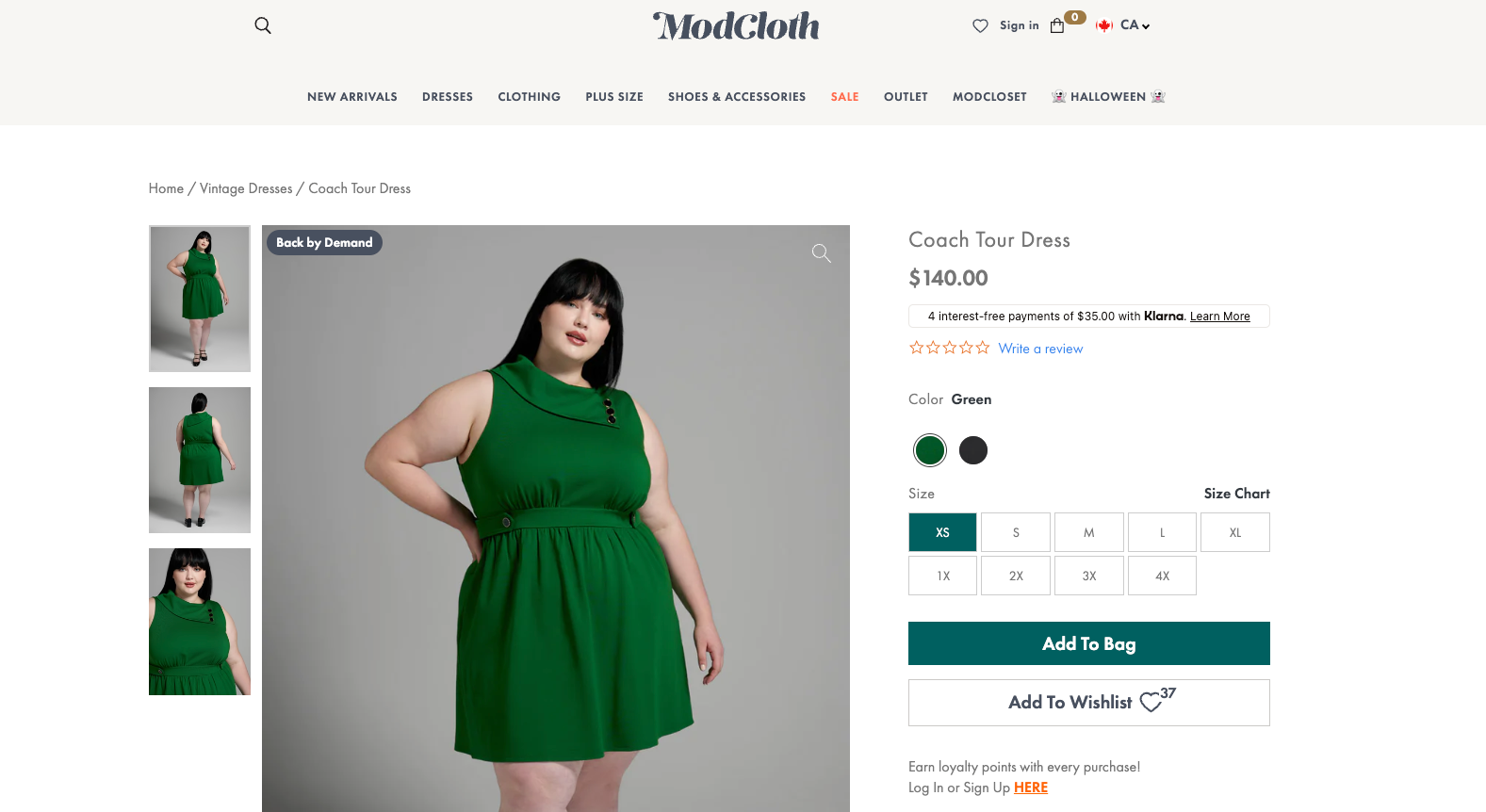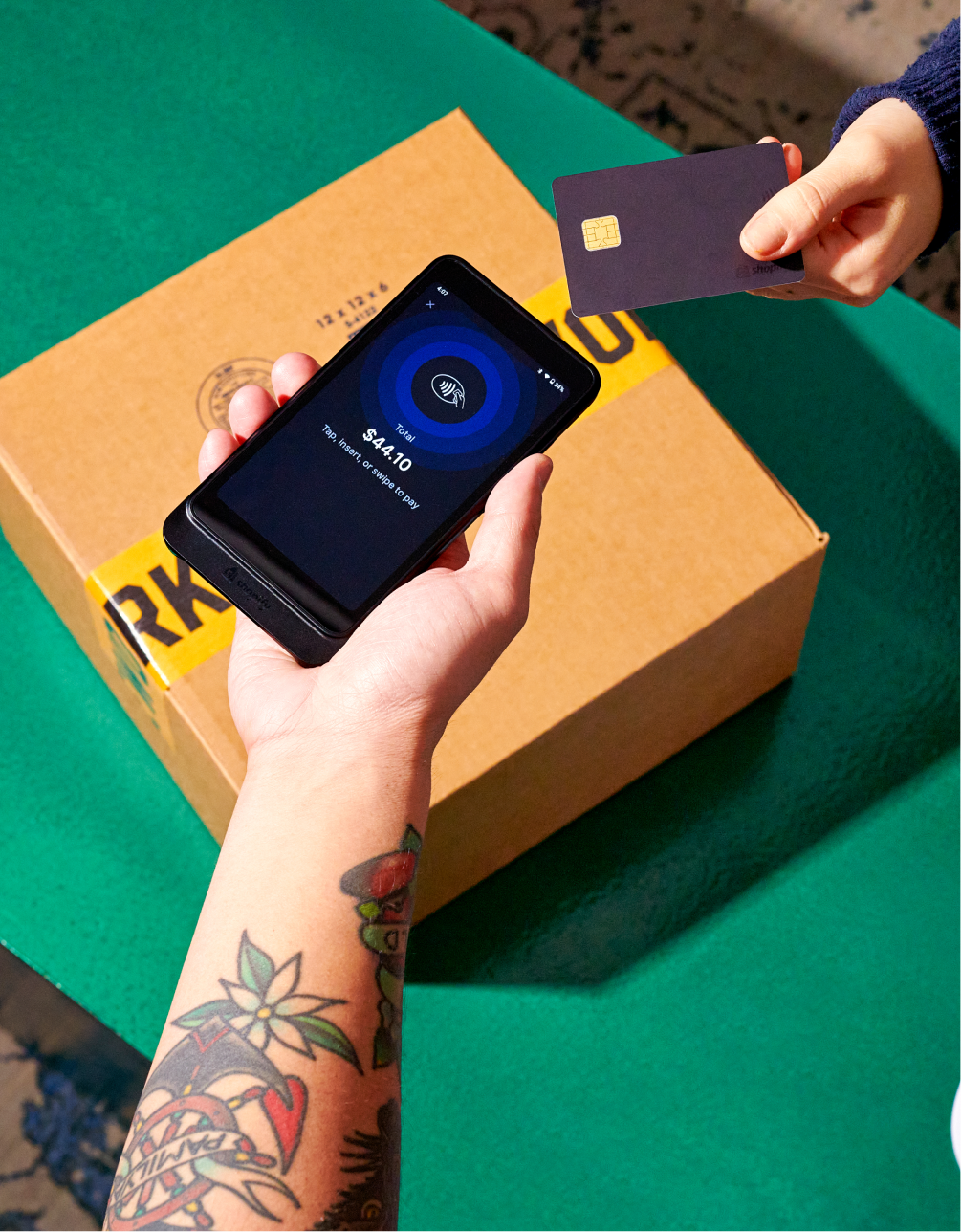You can’t ignore it: there’s a festive buzz in the air.
The holiday season is upon us and shoppers are starting to work through their Christmas gift lists. Now’s the time to start planning your holiday marketing campaigns if you want a slice of the action—and 2023 is set to be a lucrative holiday season for retailers. Last year, holiday retail sales grew by 4.8% year over year, and they’re predicted to increase by another 4.5% this year.
Here’s a mega-list of holiday marketing campaign ideas, including gift guides, email marketing campaign examples, and festive apps to get your store ready for the holiday shopping season.
31 holiday marketing campaign ideas
- Develop holiday-specific products or variants
- “Gift-ify” your existing product catalog
- Offer digital gift cards
- Create holiday collections
- Consider timed holiday drops
- Add gift wrapping as a product
- Develop a holiday gift guide
- Promote your holiday sales and products on social
- Use content marketing to drive traffic
- Host a giveaway
- Update social media headers or avatars
- Send a holiday discount code to your email list
- Incentivize new subscribers with a discount
- Launch a timed email campaign with daily or weekly features
- Swap out standard lifestyle images for festive versions
- Dress up your homepage
- Add an announcement bar
- Create a gift registry or add a wish list feature
- Enable gift-wrapping with an app
- Add a countdown bar
- Create a sharable shipping calendar
- Promote last-minute delivery and pickup options
- Enable multiple-address shipping on a single order
- Update your returns policy and set up seamless returns
- Organize a BIA holiday marketing campaign
- Host an in-store event for loyal customers
- Try a holiday market
- Host a workshop or class
- Reallocate marketing efforts to last-minute gifts
- Say thanks
- Promote your Boxing Day deals
1. Develop holiday-specific products or variants
It’s too late for many brands to develop new seasonal products, unless you’re a dropshipper or use a print-on-demand model. Handmade brands may also be nimble enough to create new products.
For everyone else, with a few tweaks to packaging or variants (say a rebranded festive sock color or holiday label for a pine-scented candle), stores can give the impression of having new offerings, even if they’re reimagined classics.
For example, coffee brand Detour released a dedicated holiday blend last year, complete with holiday branding and Christmas-inspired flavors.

2. “Gift-ify” your existing product catalog
Bundle products into gift packs for the holiday season, update packaging with festive add-ons like To/From tags or ribbons, and add gift wrapping as an option right on the product page or checkout. Everyday products from your core collection can generate new interest when bundled as a holiday combo and sold as gifts.
For example, gift shop Friends NYC packaged up a selection of candles and accessories to create a holiday gift pack for the candle obsessed.

3. Offer digital gift cards
If you are looking for a new holiday business idea or product, but lack time, digital gift cards might be the answer. They can be added to any store at any time of year. You can easily update the design to reflect the season and promote these as last-minute gift ideas to your customers. Consider featuring them prominently on your site and at the top of gift-giving collections. Promote them on social media after your shipping deadline has passed to keep holiday sales flowing until Christmas Eve.
For example, tea subscription service Sips By offers a digital gift card for a personalized tea box.

4. Create holiday collections
Create new collections around holiday themes, categories, or gift recipients. This will help website visitors easily navigate your site for holiday shopping. Curate core products into collections like Holiday Party Dresses, Gifts for Dad, or Toys for Toddlers. This is an easy and free holiday marketing strategy for a small business that is tight on time or budget.
For example, clothing brand Lulus has a Holiday Dresses collection in its online store, making it easy for shoppers to find a curated selection of products for the season.

5. Consider timed holiday “drops”
Build anticipation around new products or product variants by teasing “drops” to your social media audience or email subscribers.
An example of this holiday sale idea includes running a 12 Days of Christmas campaign, where you introduce a new featured product each day leading up to your shipping deadline. Or delight customers with a virtual advent calendar revealing a new holiday promotion each day.
For example, beauty brand Glossier drops a line of limited-edition kits for the holiday shopping season each year. Here it teased fans with a party video, shared on social media.
6. Add gift wrapping as a product
Selling a gift-wrapping service as a separate, dedicated product means it will appear in searches and collections. You can choose to offer this as a free add-on or to charge for premium wrap as a unique personalized shopping experience. Customers purchasing gifts will appreciate this convenience during the busy festive season.
Here, baby brand Numpfer offers free gift wrapping as part of its offerings. While the brand offers this year-round, it is especially convenient and special in the holiday season.

7. Develop a holiday gift guide
Help your customers navigate your store from a gift-buying perspective. Consider creating gift guides on your blog, in email marketing, or via social media. As an easy alternative, link from social media or your homepage to holiday-specific collections renamed as gift guides.

Chanel’s 2023 holiday gift guide is broken up into subcategories for “trendsetters,” “makeup muses,” “fragrance lovers,” and more.

8. Promote your holiday sales and products on social
Reward your loyal fans with discounts and deals shared exclusively with your social followers. Use a discount app to offer a gift with purchase, BOGO deals, or tiered discounts that drive higher cart totals. An effective holiday sale idea is to try timed or limited daily deals to create a sense of anticipation and urgency.
Sticker and tattoo brand Love and Lion launched its Comfort Holiday collection on social media last year with a short animated video to help spread the word.
9. Use content marketing to drive traffic
A great holiday SEO strategy can help drive more prospective customers to your site. Consider what value you can offer to your customers this time of year. Whether your target audience is looking for festive recipes, unique gift ideas, or DIY content, find relevant ways to attract them through this content and drive them to your products. Consider multiple formats like gated ebooks or how-to videos.
Lily Lou’s Aromas uses its blog to share new products, guides, and case studies, bringing in new customers through content.

10. Host a giveaway
Get into the giving spirit by hosting a giveaway on your social accounts. Ask your followers to complete certain actions like sharing your post or signing up for your newsletter in order to enter.
Anthropologie gives shoppers the chance to win their wishlist in its annual holiday giveaway.

11. Update social media headers or avatars
You may want to update social media assets like your Facebook cover image or Twitter (X) header for the holiday season to remind customers that you’re a destination for gifts. Try a tool like Hatchful or Canva to create a custom logo and social media assets for the season. Also, update your bio to include holiday messaging.
One holiday promotion idea is to use your social media header as a holiday banner, as essential oil brand Plant Therapy did to remind shoppers about its holiday sale.

12. Send a holiday discount code to your email list
Reward existing subscribers with an email marketing campaign to drive them to your site for their shopping needs. Get creative with your subject lines—you’re competing with a ton of noise in your customers’ inboxes ahead of the holiday season.
Rifle Paper Co. sent this beautifully illustrated email to subscribers with a discount code.

13. Incentivize new subscribers with a discount
You can also incentivize signups by offering a discount to new subscribers. Set up a welcome email that generates a unique coupon code for new subscribers, or use a pop-up on your site and reveal the code upon sign-up.
Here, My Christmas Crate gives new subscribers $5 when they share their email addresses.

14. Launch a timed email campaign with daily or weekly features
An easy holiday promotion idea is to kick off a multi-email campaign. Increase your open rates and click-through rates by teasing new holiday promotions and surprises each day or week. Think: daily deals, discount codes, gifts with purchases, and new products.
For example, clothing brand Spell shared its 12 Days of Christmas giveaway via email, giving customers an update on each day’s deals, promotions, and giveaways leading up to Christmas.

15. Swap out standard lifestyle images with festive versions
If you have the time and budget to reshoot some of your bestsellers as holiday-themed lifestyle photos, it encourages your site visitors to consider your products as gift ideas. Otherwise, browse free stock photos on sites like Burst to find images to use for collection headers and more.
Hydration brand, Nuun replaces its product images with festive versions—baubles and Christmas tree branches are all it takes to add a holiday touch.

16. Dress up your homepage
Add festive elements to your homepage to let buyers know you’re a destination for gifts or holiday products. Several apps in the Shopify App Store make the process even easier if you don’t have time to design custom holiday assets:
- Create a snow-falling effect on your homepage with Christmas & Snowfall Effect
- Festive Decorations adds animated holiday icons to your store
- Greet customers with a seasonal soundtrack using Custom Background Music: Xmas
Sephora turned its homepage into a festive feast for the eyes with holiday colors, illustrations, and copy.

17. Add an announcement bar
An announcement bar at the top of your website can be used to announce specials or shipping deadlines to new visitors. An app like Hextom works with your Shopify store to add custom banners in seconds. Use this space to draw attention to free shipping, discounts, and other holiday campaigns.
Here, guitar brand Loog added a sticky announcement bar to the top of its site to promote its free holiday shipping deal, further incentivizing customers to purchase.

18. Create a gift registry or add a wish list feature
Wishlist Plus and Gift Reggie are gift registry apps that let customers save favorites and enable you to send custom marketing messages. This is a great marketing tactic to help build your customer list—customers create an account to save favorite products, helping you re-engage them in future marketing campaigns. Even if they don’t purchase now, you can notify them when items in their wish list are on sale.
ModCloth gives holiday shoppers the option to add items to a wishlist.

19. Enable gift-wrapping with an app
Rather than set up wrapping as a separate product, try an app that integrates with your store. Wrapped adds a gift-wrapping option directly to product pages and checkout. Customers can select from multiple options and add a gift message before adding to cart.
For example, water bottle brand Moon Bottles gives holiday shoppers the option to gift-wrap and add a personalized message to their order for an extra fee.

20. Add a countdown bar
Apps like POWR: Cart Countdown Timer Bar and Order Deadline remind customers of your purchase deadlines, with countdowns embedded in product pages. Communicating cut-off shipping dates clearly on your website can create a sense of urgency—a successful holiday marketing strategy you can use to drive sales.
Décor shop The Spirit of Christmas uses a countdown to Christmas timer on its site to create a sense of urgency leading up to the holiday season.

21. Create a shareable shipping calendar
Customers appreciate clear guidelines around shipping to ensure their gifts will arrive under the tree in time. Don’t make them search for it. A calendar graphic or chart with important dates is a useful asset you can share across FAQ pages, email, and social media.
Good Luck Sock’s holiday shipping guide shows customers exactly when they need to order to get their products delivered in time.

22. Promote last-minute delivery and pick-up options
If you sell to local customers, offer ordering beyond the shipping cut-off, and allow customers to use curbside pick-up for last-minute orders from your physical store, studio, or office. You may even offer a one-time local delivery option just for the holidays.
Clothing brand John Elliot offers in-store pickup across the country so customers can get their products quicker.

23. Enable multiple-address shipping on a single order
Giftship is a great feature to offer your customers. If a customer is doing all their shopping in one place, they can ship items within the same order to multiple addresses.

24. Update your returns policy and set up seamless returns
Nail down your refund and exchange policies well in advance, especially if your terms change over the holidays. The promise of a stress-free returns experience can give customers purchase confidence over the holiday season and increase conversion.
Clothing brand For Love and Lemons includes a section on holiday shipping timelines and return policies on its returns page, so customers have a clear sense of when items will be shipped and arrive.

25. Organize a BIA holiday marketing campaign
If you have a physical store, a great holiday promotion idea for small businesses is combining efforts with your neighbors on a holiday marketing campaign. Try a Main Street bingo card, collaborations with other brands, a scavenger hunt, or a “doors open” event with special hours and activities.
The Junction business association in Toronto organized a window wonderland with local businesses to get creative with their window displays.

26. Host an in-store event for loyal customers
Open late for your loyal local customers and invite them into your space for an exclusive event with food, music, and sale items.
Plant shop Hi Cacti runs an annual in-store holiday event every year, with in-person activities and cocktails for the community and sales on specific products.
27. Try a holiday market
Whether you attend an existing holiday market or host your own, this is a chance for ecommerce businesses to test the waters with retail selling. Network with other entrepreneurs, meet the local community, and invite shoppers to visit your website.
Primrose Antiques & Gifts promotes its annual holiday gift market on Instagram, featuring local craftspeople, artists and makers.
28. Host a workshop or class
Schedule in-store events around a holiday campaign. For example, if you’re trying to push a new product, how can the product be incorporated into a DIY project you can teach? Fancy Tiger Crafts puts on a schedule of holiday events each year, including embroidery classes.

29. Reallocate marketing efforts to last-minute gifts
After your shipping deadline, allocate your marketing dollars to promoting gift cards and digital products that can be delivered last minute. Fiber arts brand October House adds a discount to its holiday PDF download patterns that shoppers can snap up the night before Christmas.

30. Say thanks
Don’t forget to say thanks! Keep your customers engaged with your brand and don’t get lost in the shuffle. After the glitter has settled, send thank you cards or follow up promotions with an offer for their next purchase. PostPilot helps you bypass the overcrowded inbox with physical, personalized postcards sent directly to your customers.
Beardbrand sends customers a post-holidays postcard to remind them of their purchase and offer a discount on their next one.

31. Promote your Boxing Day deals
Wrap up your holiday marketing campaign with Boxing Day (or Boxing Week) promotions. Send teasers for these ahead of Christmas to hit inboxes early.
Glory Juice Co. gets ahead of the game and promotes its Boxing Day discounts on Instagram.
5 tips to make your holiday marketing ideas successful
Now that you’re loaded up with inspiration, it’s time to put it into action. Here are some top tips to keep in mind to make sure your holiday marketing ideas bring you the best results this festive season.
1. Plan early
We’ve only just seen the back of summer, which can make it difficult to focus on the colder, darker nights. But to reap the biggest rewards from your holiday marketing campaigns, you need to get ahead of the game.
Research reveals 57% of people hope to have their holiday shopping finished by December, which means you need to get a move on. Start planning now so you have all the content and assets you need by the time you go live. The last thing you want is to be scrambling to create Instagram graphics or email copy the night before your launch.
Think about your holiday campaigns now and build buzz through October with teasers. By the time Thanksgiving is over and Christmas is on the horizon, your customers will be ready to pull out their wallets and buy—and you can sit back and relax knowing you’ve prepared well in advance.
2. Set goals for holiday sales
Setting goals is crucial for knowing how well your holiday marketing efforts paid off—did you achieve the results you wanted? Before mapping out what you’re going to post and where, think about what you want to achieve. Start by analyzing last year’s results to see what’s possible and then set goals based on your overall business objectives.
Keep your goals SMART: specific, measurable, achievable, relevant, and time-based. For example “Generate 10% more sales in December through email” is better than “Get more leads.”
3. Create a holiday marketing strategy
There are a lot of ideas here, but that doesn’t mean you have to use all of them. Instead, pick those most relevant to your brand and audience and work them into a holiday marketing strategy. Think about what you’re going to post, where you’re going to post it, and when.
Mix and match your channels to widen your reach. Send emails, promote offers on Instagram, and add new landing pages to your website now.
4. Personalize your marketing efforts
Shoppers are more likely to buy if they feel like a brand understands them and knows what they want. Use previous shopping data to deliver personalized marketing messages to customers this Christmas. This can include sending personalized product recommendations or offering discounts for your top shoppers.
5. Showcase your personality
A lot of holiday shopping is impulse-driven by emotions. According to research, 80% of shopper decisions are driven by feelings. Tap into this by showcasing your personality in your holiday marketing campaigns. Be personable and human by cracking jokes, using a casual tone of voice, and sharing your unique values.
Wrap up 2023 with a bang
Marketing during the holidays is a different beast. For one, your customers are typically shopping for others, not themselves. And shipping cut-off dates create a sense of rush and urgency. Use these holiday marketing tips and tools to adapt your efforts to the unique nature of the holiday season and give your customers a positive experience that will keep them coming back into the new year.
Read more
- How to Prepare Your Online Store for the Holiday Season
- How to Use Gift Guides to Boost Your Holiday Sales
- TikTok Merch: How To Make and Sell it on Tiktok
- How To Choose the Best Etsy Shop Name
- Understanding The Consequences of Brexit On Ecommerce
- Real-Time Marketing- How to Use Trending Moments to Reach a Larger Audience
- How to Sell Your Products on Social Media in 2023
- Drive More Ecommerce Sales with Live Chat Without Being Trapped at Your Desk
- Turn Showrooming Into Sales- Introducing Buy Online for Shopify POS
Holiday marketing ideas FAQ
What is the best form of marketing for the holidays?
The holiday marketing campaigns and channels that are best for your brand depend on a number of factors. During the holiday season, you’ll still want to use consistent messaging and branding, but injected with holiday cheer. Your holiday marketing campaigns should account for the increase in competition and shipping deadlines. Engage your target audience with a holiday promotion, like a free gift with purchase. Or run a social media contest on your most popular marketing channel.
How do you attract customers during the holidays?
Running a successful holiday marketing campaign starts with understanding your target audience. If you’re looking to attract new customers, learn their needs, find out which social media platforms they’re using, and develop new products, holiday gift guides, and ad campaigns that speak to them. Invest in customer experience to build loyalty beyond the holiday season.
What are some creative holiday marketing campaign ideas?
A few creative holiday marketing campaigns you can try are: A holiday “spin to win” contest Targeted gift guides based on customer personas Promoted products or gift bundles using influencer marketing In-store holiday events or workshops Promotion offering free shipping on featured products
When should I start marketing holiday items?
Don’t leave it too late. Most people hope to have finished their holiday shopping by December, so plan ahead and start early. Make sure you have enough time to create your holiday campaigns and enough time to execute them across various channels.













